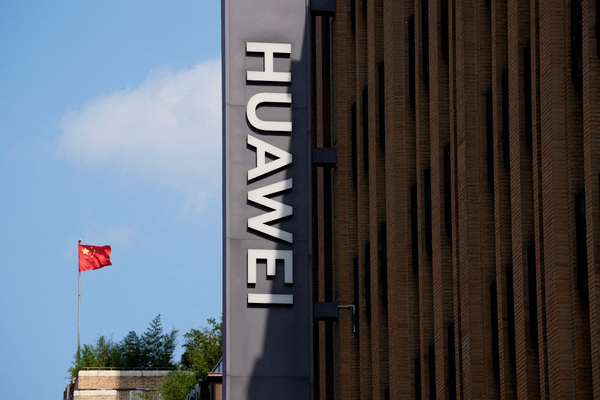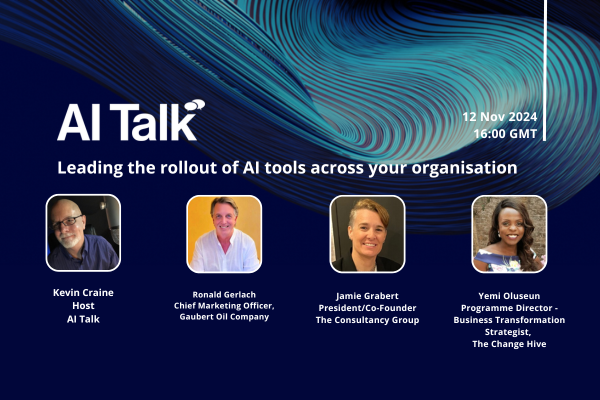There’s not enough talk about AI in the utilities sector
AI’s potential in utilities is much greater than many might think

According to IBM’s recent study, 74 per cent of energy and utilities companies are already exploring or using AI in their operations. I feel like the rest should quickly catch up, given just how significant the potential of technology is for the sector. In this article, I’ll explore the key challenges utilities organisations face today and explain how AI can help overcome them based on industry data and my company’s observations.
The growing importance of AI in utilities
The energy sector is grappling with complex challenges that threaten its ability to deliver reliable, affordable and sustainable power. Here are some of the main factors contributing to this:
Aging infrastructure
Many energy grids, power plants and other critical infrastructure components are decades old. Most of these systems were designed for a simpler energy landscape, long before the complexities of renewable energy, electric vehicles and smart grids became part of the equation. For example, the US electric grid was largely constructed in the 1960s and 1970s. It is poorly equipped to handle growing electricity demand and is quite vulnerable to extreme weather events.
In recent years, the US has experienced more frequent and severe power outages, often caused by hurricanes, wildfires and heatwaves. These outages not only disrupt daily life but also result in significant economic losses, placing additional pressure on energy companies to modernise their systems.
Updating and replacing aging infrastructure is a monumental task that requires substantial financial investment, planning and technological innovation.
Increasing demand
Global energy demand is skyrocketing, driven by rapid population growth, urbanisation and industrialisation. According to the United Nations, the global population is projected to reach 8.5 billion by 2030 and 9.7 billion by 2050. This ongoing population boom, combined with increasing economic development, especially in emerging markets, is fuelling unprecedented demand for energy.
In addition, new technologies, which put additional pressure on the grid, are rapidly becoming widespread. Electric vehicles (EVs) are one such example. Their sales are on track for a record year, and we can fully expect further growth in the coming decades as governments and consumers push for cleaner transportation options.
Industrial growth, digitalisation and the proliferation of energy-intensive technologies such as data centres further compound this challenge. Without significant improvements in energy generation, distribution and storage, many grids may struggle to keep pace with rising demand, leading to more frequent outages and higher costs for consumers.
Climate change
The energy sector is at the heart of the global fight against climate change. As the primary source of greenhouse gas emissions, the energy industry must transition to cleaner, more sustainable forms of energy production to mitigate the effects of climate change. The Paris Agreement, which entered into force in 2016, aims to limit global warming to 1.5°C above pre-industrial levels, requiring significant reductions in carbon emissions over the coming decades.
This transition, however, is fraught with challenges. Renewable energy sources such as solar and wind are intermittent by nature, meaning they don’t produce electricity consistently. Integrating these sources into existing power grids requires advanced technology and sophisticated energy management strategies to ensure a stable and reliable power supply. Furthermore, retrofitting existing infrastructure to accommodate renewable energy represents a massive financial and logistical undertaking.
In the face of these obstacles, energy companies are under increasing pressure to develop and implement strategies that will not only reduce their carbon footprint but also ensure long-term energy security and affordability. As climate change intensifies, with more extreme weather events and rising temperatures, the urgency to act is greater than ever.
Cyber-security threats
As utilities adopt more digital technologies to improve operational efficiency and customer service, they also become more vulnerable to cyber-threats. The increasing use of smart grids, connected devices and automated systems has expanded the attack surface for malicious actors, making energy infrastructure a prime target for cyber-attacks.
The recent spike in the number of attacks across the US and Europe underscores the critical importance of strengthening cyber-security in the energy sector. Utilities are responsible for maintaining not just the physical infrastructure that delivers power but also the digital systems that monitor, control and manage these networks. Therefore, a major security breach could lead to widespread power outages, financial losses and even risks to national security.
Securing energy infrastructure from cyber-attacks requires a multi-layered approach, including threat detection, real-time response capabilities and continuous system monitoring.
Evolving customer expectations
Today’s energy consumers are more informed, engaged and demanding than ever before. They expect utilities to offer personalised services, greater transparency and sustainable energy solutions that align with their environmental values. However, 70 per cent of consumers report that they are not willing to spend more time or money on sustainable energy choices. So, it is generally expected that utilities companies will take action to make these solutions more accessible and affordable.
This shift in consumer expectations presents both a challenge and an opportunity for utilities. On one hand, companies must find ways to meet these demands without driving up costs or compromising service reliability. On the other, those who successfully innovate and deliver sustainable, customer-focused solutions can differentiate themselves in a highly competitive market.
How AI can help
If implemented properly, AI technologies have the potential to help utilities organisations address each of the challenges I’ve listed above. Here’s how:
Optimising operations. AI enables predictive maintenance. By analysing data from sensors embedded in power plants, substations and transmission lines, the algorithms can predict equipment failures before they occur. This not only prevents costly unplanned outages but also extends the lifespan of critical infrastructure. Predictive maintenance has been shown to reduce breakdowns by 70 per cent and maintenance costs by 25 per cent.
Managing grid complexity. AI is a powerful assistant for managing the complexity of modern energy grids, particularly as renewable energy sources become more prevalent. AI systems can help balance supply and demand, ensuring grid stability. Studies demonstrate conclusively AI’s ability to optimize different facets of renewable energy sources (RES) and enhance grid stability.
Advancing sustainability. By improving the efficiency of renewable energy plants and optimising energy storage systems, AI also helps reduce carbon emissions and increase the reliability of clean energy sources. AI-powered forecasting tools can predict energy generation from solar, wind and other renewables with good accuracy, allowing utilities to better plan their energy supply and reduce reliance on fossil fuels.
Enhancing cyber-security. This paper clearly shows AI’s ability to detect and respond to cyber-threats in critical energy infrastructure environments. More specifically, AI can dramatically enhance threat detection, achieving rates as high as 98 per cent, while reducing incident response times by over 70 per cent. Furthermore, the integration of machine learning algorithms enables early prediction of failures and cyber-attacks, significantly boosting proactivity and strengthening security management within energy infrastructure.
Conclusion
AI offers a transformative solution to the complex challenges the utilities sector is facing. It can assist companies in optimising operations, managing grid complexity, advancing sustainability and enhancing cyber-security.
Ultimately, AI models can help utilities deliver reliable, affordable and sustainable power while meeting the evolving needs of their customers. I firmly believe that, as the technology continues to mature and its applications expand, AI will play an increasingly critical role in shaping the future of the energy industry.
If you’d like to learn more about how AI can benefit utilities organisations and explore potential applications, I invite you to contact me here.

By Ludovic Gaudé, CEO, Avenga and Qinshift

Business Reporter Team
Most Viewed
Winston House, 3rd Floor, Units 306-309, 2-4 Dollis Park, London, N3 1HF
23-29 Hendon Lane, London, N3 1RT
020 8349 4363
© 2024, Lyonsdown Limited. Business Reporter® is a registered trademark of Lyonsdown Ltd. VAT registration number: 830519543






